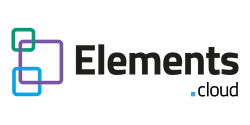LEARNING OBJECTIVES
After completing this unit, you’ll be able to:
- Create a Login Flow that accesses a VF Page for all users
- Set up Elements SSO for Salesforce users
- Get users the Chrome Extension.
PREREQUISITES
You need access to Elements Catalyst so you will need to run a free 14 day trial.
GIVE USER ACCESS TO IN-APP HELP
You have created your help topics. You have tested how they look in record pages. Now you need to make them available to your end users. There are few steps to make sure it is seamless for them.
Install Chrome Extension for all end users
First, they all need to have our Chrome Extension installed, which they can do by going to the Chrome Extensions store. Here is the link to the extension.
Or if you are able to, you can push the extension to every user. Here are the instructions on how to do that. https://developer.chrome.com/extensions/external_extensions
The Chrome Extension will automatically update when we release improvements, but it can take up to 5 hours to propagate. If you close the Chrome browser and restart, it will be automatically updated. If you are using the automated push approach, you can use that to force the update.
Set up Elements access for all users and Profiles
Salesforce users are now Elements users, but you need to automatically log them into the Chrome Extension. Luckily there is a standard Salesforce feature called Login Flow to do this.
There are 3 steps.
- Create a VisualForce Page
- Create a Login Flow for each Profile referencing the VF Page
- Connect Salesforce users to Elements
1. Create a Visualforce Page
In Salesforce, go to the Elements app, select the Elements Settings tab and the Elements Login Flow sub tab.
Create a new VF Page.

Give it a name and check the “Available for Lightning Experience… ” check box
Delete the code that is in the empty VF Page and paste in this code
<apex:page controller=”Q9.ElementsGenericExtensionController” action=”{!setElementsLoginTokenToCookie}”>
</apex:page>
Save the VF Page.
From the list of VF Pages, set up Security for each Profile.
2. Create a Login Flow for each Profile referencing the VF Page
If you don’t set up the Login Flow for Profiles, the user needs to login to Chrome Extension – which they won’t do. So it only takes a moment to set this up for each Profile.
Did you know that you can run the Org Analytics report to see which Profiles have users?
.
For each Profile:
- Create a new Login Flow
- Select the VisualForce Page you have just created
- Select the user license and Profile to apply this to Login Flow
3. Salesforce users need Elements account (SSO)
The help topics are hosted by Elements, so every Salesforce user needs to be an Elements Viewer or Editor. They do not need to register, because you can add them from the Elements Setting app. This provides SSO so it is seamless for the end users. They don’t even need to know Elements is behind it all.
In Salesforce, go to the Elements app, selects the Elements Settings tab and the Connect Users (SSO) sub tab. Select the users you want to connect and click the “Connect ” button. At the bottom check the box “Assign new users” so that any new users added to Salesforce are automatically connected.

Purchase User Adoption licenses
The final step is that you need a user adoption license for every end user. Contact success@elements.cloud. Here is the pricing of the licenses
=======================================================================
